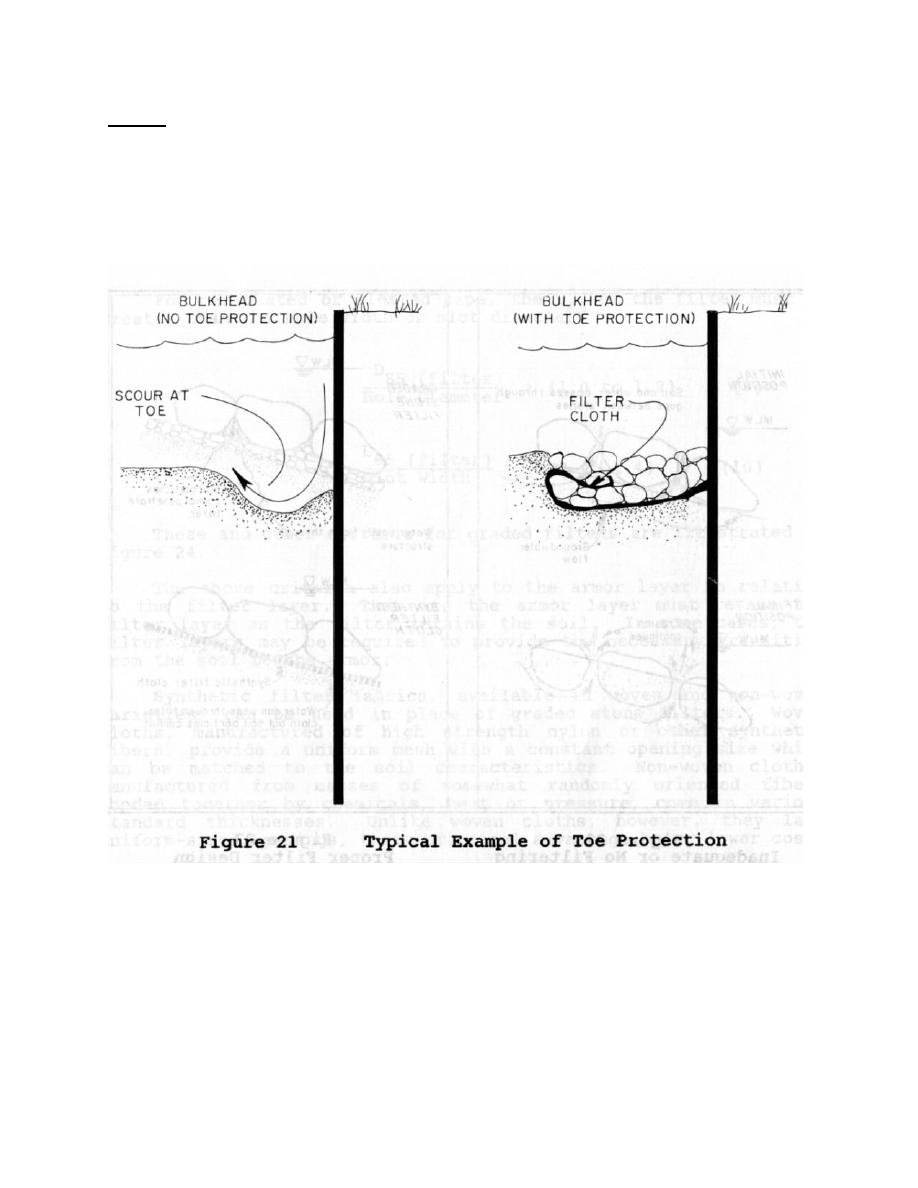
Filtering
Filtering, although one of the most important technical design details of shore protection
structures, is probably the most neglected, and leads to more failures than any other cause. The
consequences of not providing proper filtering are illustrated on Figure 22. Without filtering, the soil
particles are easily transported through the armor layer, which continues to settle as the bank erodes. A
properly designed filter blocks the passage of the soil particles while still allowing for hydrostatic
pressure relief beneath the structure (Figure 23).
A filter layer can be provided through the use of either graded aggregates or a synthetic filter
fabric. Filter criteria for graded filters are covered in standard references such as Winterkorn and Fang
(1975). Bertram (1940) developed one widely used criterion as given below:
D15 (filter)/D85 (soil)
< 4 to 5 < D15 (filter)/ D15(soil)
(7)
The left side of the equation is intended to prevent piping of fine-grained soil through the filter. That is,
the 15-percent size of the filter material, D15 (percent finer by weight), must be no more than 4 or 5 times
the D85 size of the protected soil. The right side of the equation provides for adequate permeability of the
49



 Previous Page
Previous Page
